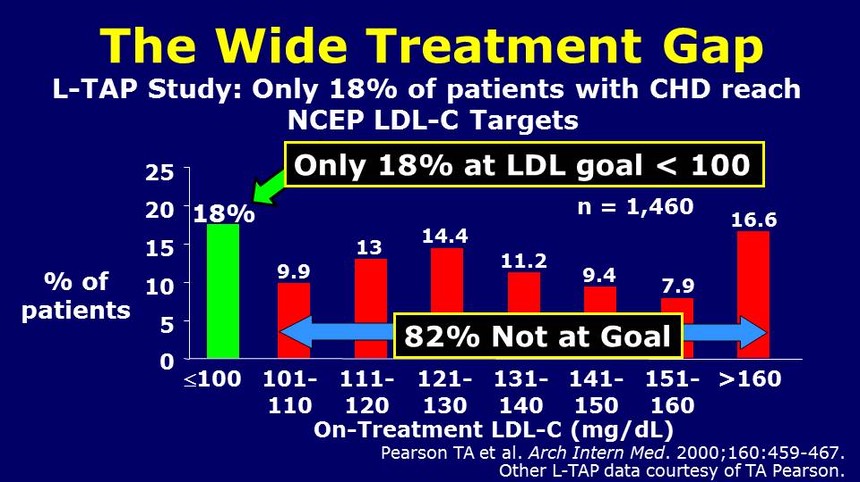From 2005 to present
While smoking cessation, weight control, regular exercise, blood pressure control, diabetes management are all important in preventing heart attack and stroke, LDL-cholesterol lowering accounted for more than 70% of the cardiovascular event reductio, only optimal cholesterol management can predictably and reliably induce plaque stabilization and plaque regression.

This is not surprising since the essential component of plaque is oxidized LDL-cholesterol that accumulated within the wall of the artery over a period of many years and decades without any symptoms.

Optimal lipid management is the most challenging of all since its success depends primarily on the expertise of the physicians. I became a board certified lipidologist in 2005 but a few years before that, I became aware of the wide treatment gap in patients with known heart disease nationwide. In the L-TAP study, only 18% of coronary heart disease patients were treated to recommended LDL-c goal; 82% were either treated inadequately or not treated at all.
To close the treatment gap, a new approach (PaKS) and a new clinical management system (ACCEPT) are needed. So I created the solution and for several years, polished them.

In 2006, we published and presented our first performance data. Here with my co-author, my son, Emil M. deGoma, MD, FACC, FNLA.
Using PaKS and ACCEPT, we closed the treatment gap in our practice with 85% of patients at goal, compared to only 18% in the L-TAP study. Physicians can provide a much higher quality of care if they have the passion, a working knowledge, e-tools and a numerically goal-oriented clinical management system. EHR has nothing to do with it.




